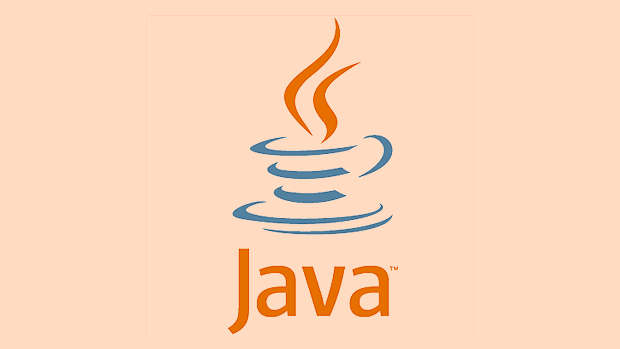Connecting Java to Specific Databases like MySQL
Jul 04, 2025 am 02:09 AMJava application connection MySQL usually uses JDBC. The specific steps are as follows: 1. Add MySQL JDBC driver dependencies (such as Maven configuration) or manually add JAR; 2. Make sure the MySQL service is running and ready for connection information (host, port, database name, user name and password); 3. Use DriverManager.getConnection() to establish a connection, and pay attention to the JDBC URL format and automatic driver loading characteristics; 4. Perform queries and operations through Statement or PreparedStatement, and prioritize the use of PreparedStatement to prevent SQL injection; 5. Correctly close ResultSet, Statement and Connection to avoid resource leakage; 6. Solving common problems such as ClassNotFoundException, SQLException, time zone warnings and SSL errors can be excluded by checking dependencies, URL parameters and external testing.

Java apps hooking up to MySQL is pretty standard these days. If you're dealing with anything from a basic app to something more complex, connecting Java to MySQL usually involves JDBC (Java Database Connectivity). Let's walk through how that works in practice.

Setting Up the Environment
First things first — make sure your project has access to the MySQL JDBC driver. If you're using Maven or Gradle, just add the dependency. For example, in Maven:

<dependency>
<groupId>mysql</groupId>
<artifactId>mysql-connector-java</artifactId>
<version>8.0.33</version>
</dependency>If not, download the JAR manually and add it to your build path. Also, confirm that your MySQL server is running and accessible. You'll need the host address, port (usually 3306), database name, username, and password handy before moving forward.
Establishing the Connection
To connect Java to MySQL, use DriverManager.getConnection() . The connection string follows a specific format:

jdbc:mysql://[host]:[port]/[database]?user=[username]&password=[password]
Here's a simple example:
Connection conn = DriverManager.getConnection(
"jdbc:mysql://localhost:3306/mydb", "root", "password");A few things to watch for:
- Make sure the JDBC URL matches your setup.
- Older versions of MySQL drivers required you to explicitly load the driver class using
Class.forName("com.mysql.cj.jdbc.Driver"), but newer ones handle this automatically. - Always close connections when done — use try-with-resources where possible.
Handling Queries and Results
Once connected, you can execute queries using Statement or PreparedStatement . Use executeQuery() for SELECT statements and executeUpdate() for INSERT/UPDATE/DELETE.
For example:
Statement stmt = conn.createStatement();
ResultSet rs = stmt.executeQuery("SELECT id, name FROM users");
while (rs.next()) {
int id = rs.getInt("id");
String name = rs.getString("name");
System.out.println("User: " name);
}A few tips:
- Prefer
PreparedStatementover regularStatementto prevent SQL injection. - Always validate and clean input before passing it into a query.
- Don't forget to close
ResultSet,Statement, andConnectionobjects to avoid leaks.
Troubleshooting Common Issues
Some common problems pop up when connecting Java to MySQL:
- ClassNotFoundException : Missing JDBC driver. Double-check dependencies.
- SQLException : Usually related to incorrect credentials, wrong URL, or network issues.
- Timezone errors : Add
serverTimezone=UTCto the JDBC URL if you see warnings about time zones. - SSL connection errors : If SSL isn't needed, append
useSSL=falseto the connection string.
Also, test connectivity outside Java first — try connecting via MySQL Workbench or command line to rule out configuration issues on the DB side.
Basically that's it.
The above is the detailed content of Connecting Java to Specific Databases like MySQL. For more information, please follow other related articles on the PHP Chinese website!

Hot AI Tools

Undress AI Tool
Undress images for free

Undresser.AI Undress
AI-powered app for creating realistic nude photos

AI Clothes Remover
Online AI tool for removing clothes from photos.

Clothoff.io
AI clothes remover

Video Face Swap
Swap faces in any video effortlessly with our completely free AI face swap tool!

Hot Article

Hot Tools

Notepad++7.3.1
Easy-to-use and free code editor

SublimeText3 Chinese version
Chinese version, very easy to use

Zend Studio 13.0.1
Powerful PHP integrated development environment

Dreamweaver CS6
Visual web development tools

SublimeText3 Mac version
God-level code editing software (SublimeText3)

Hot Topics
 Handling NULL Values in MySQL Columns and Queries
Jul 05, 2025 am 02:46 AM
Handling NULL Values in MySQL Columns and Queries
Jul 05, 2025 am 02:46 AM
When handling NULL values ??in MySQL, please note: 1. When designing the table, the key fields are set to NOTNULL, and optional fields are allowed NULL; 2. ISNULL or ISNOTNULL must be used with = or !=; 3. IFNULL or COALESCE functions can be used to replace the display default values; 4. Be cautious when using NULL values ??directly when inserting or updating, and pay attention to the data source and ORM framework processing methods. NULL represents an unknown value and does not equal any value, including itself. Therefore, be careful when querying, counting, and connecting tables to avoid missing data or logical errors. Rational use of functions and constraints can effectively reduce interference caused by NULL.
 Performing logical backups using mysqldump in MySQL
Jul 06, 2025 am 02:55 AM
Performing logical backups using mysqldump in MySQL
Jul 06, 2025 am 02:55 AM
mysqldump is a common tool for performing logical backups of MySQL databases. It generates SQL files containing CREATE and INSERT statements to rebuild the database. 1. It does not back up the original file, but converts the database structure and content into portable SQL commands; 2. It is suitable for small databases or selective recovery, and is not suitable for fast recovery of TB-level data; 3. Common options include --single-transaction, --databases, --all-databases, --routines, etc.; 4. Use mysql command to import during recovery, and can turn off foreign key checks to improve speed; 5. It is recommended to test backup regularly, use compression, and automatic adjustment.
 Handling Common Java Exceptions Effectively
Jul 05, 2025 am 02:35 AM
Handling Common Java Exceptions Effectively
Jul 05, 2025 am 02:35 AM
The key to Java exception handling is to distinguish between checked and unchecked exceptions and use try-catch, finally and logging reasonably. 1. Checked exceptions such as IOException need to be forced to handle, which is suitable for expected external problems; 2. Unchecked exceptions such as NullPointerException are usually caused by program logic errors and are runtime errors; 3. When catching exceptions, they should be specific and clear to avoid general capture of Exception; 4. It is recommended to use try-with-resources to automatically close resources to reduce manual cleaning of code; 5. In exception handling, detailed information should be recorded in combination with log frameworks to facilitate later
 Paginating Results with LIMIT and OFFSET in MySQL
Jul 05, 2025 am 02:41 AM
Paginating Results with LIMIT and OFFSET in MySQL
Jul 05, 2025 am 02:41 AM
MySQL paging is commonly implemented using LIMIT and OFFSET, but its performance is poor under large data volume. 1. LIMIT controls the number of each page, OFFSET controls the starting position, and the syntax is LIMITNOFFSETM; 2. Performance problems are caused by excessive records and discarding OFFSET scans, resulting in low efficiency; 3. Optimization suggestions include using cursor paging, index acceleration, and lazy loading; 4. Cursor paging locates the starting point of the next page through the unique value of the last record of the previous page, avoiding OFFSET, which is suitable for "next page" operation, and is not suitable for random jumps.
 Aggregating data with GROUP BY and HAVING clauses in MySQL
Jul 05, 2025 am 02:42 AM
Aggregating data with GROUP BY and HAVING clauses in MySQL
Jul 05, 2025 am 02:42 AM
GROUPBY is used to group data by field and perform aggregation operations, and HAVING is used to filter the results after grouping. For example, using GROUPBYcustomer_id can calculate the total consumption amount of each customer; using HAVING can filter out customers with a total consumption of more than 1,000. The non-aggregated fields after SELECT must appear in GROUPBY, and HAVING can be conditionally filtered using an alias or original expressions. Common techniques include counting the number of each group, grouping multiple fields, and filtering with multiple conditions.
 How Java ClassLoaders Work Internally
Jul 06, 2025 am 02:53 AM
How Java ClassLoaders Work Internally
Jul 06, 2025 am 02:53 AM
Java's class loading mechanism is implemented through ClassLoader, and its core workflow is divided into three stages: loading, linking and initialization. During the loading phase, ClassLoader dynamically reads the bytecode of the class and creates Class objects; links include verifying the correctness of the class, allocating memory to static variables, and parsing symbol references; initialization performs static code blocks and static variable assignments. Class loading adopts the parent delegation model, and prioritizes the parent class loader to find classes, and try Bootstrap, Extension, and ApplicationClassLoader in turn to ensure that the core class library is safe and avoids duplicate loading. Developers can customize ClassLoader, such as URLClassL
 Explained: Java Polymorphism in Object-Oriented Programming
Jul 05, 2025 am 02:52 AM
Explained: Java Polymorphism in Object-Oriented Programming
Jul 05, 2025 am 02:52 AM
Polymorphism is one of the core features of Java object-oriented programming. Its core lies in "one interface, multiple implementations". It implements a unified interface to handle the behavior of different objects through inheritance, method rewriting and upward transformation. 1. Polymorphism allows the parent class to refer to subclass objects, and the corresponding methods are called according to the actual object during runtime; 2. The implementation needs to meet the three conditions of inheritance relationship, method rewriting and upward transformation; 3. It is often used to uniformly handle different subclass objects, collection storage and framework design; 4. When used, only the methods defined by the parent class can be called. New methods added to subclasses need to be transformed downward and accessed, and pay attention to type safety.
 Understanding Variable Scope and Lifetime in Java
Jul 05, 2025 am 02:36 AM
Understanding Variable Scope and Lifetime in Java
Jul 05, 2025 am 02:36 AM
The scope and life cycle of variables in Java depend on type. 1. The scope of local variables is limited to the code block, and the life cycle is destroyed as the code block ends; 2. The scope of member variables is the entire class, and the life cycle is created and destroyed with the object; 3. The scope of static variables is the entire class and can be accessed through the class name, and the life cycle exits from the class loading to the JVM; 4. The scope of parameter variables is limited to the method body, and the life cycle begins and ends with the method call. Variables should be kept as small as possible and short as possible to improve security.






